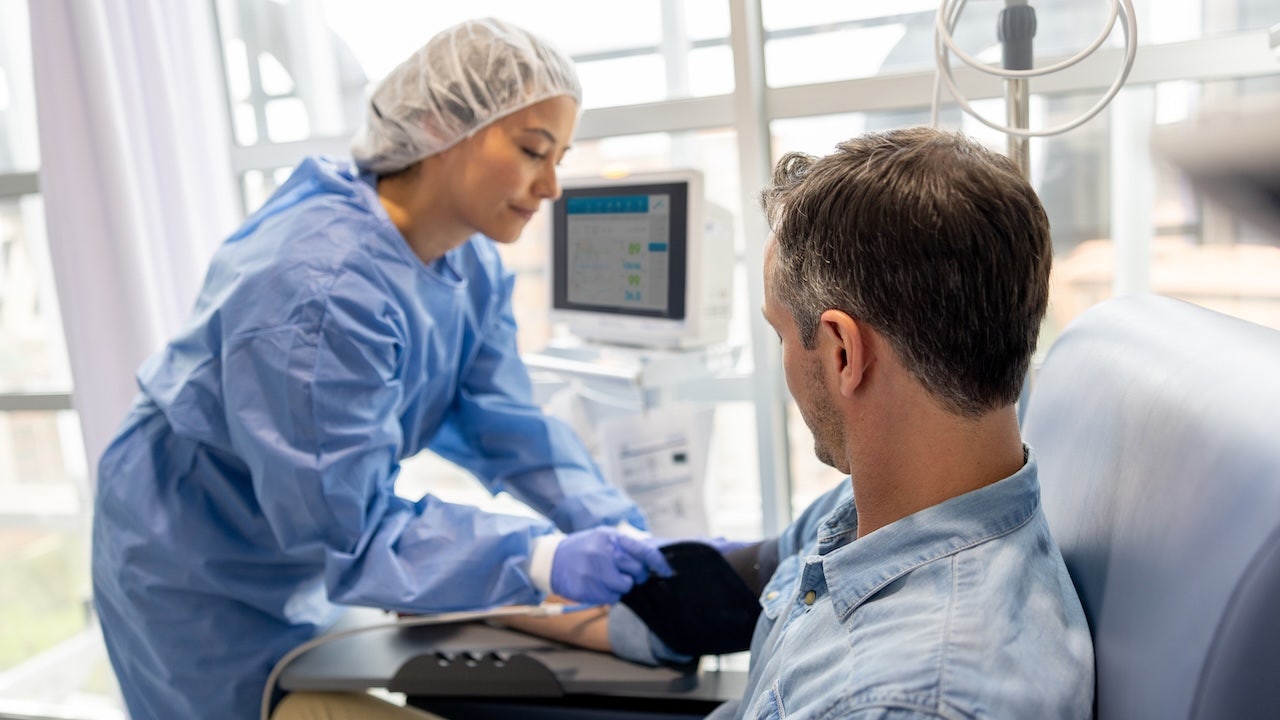Thousands need a kidney transplant each year. Living donors could help meet the demand

White Coat Black Art26:30The kidney transplant waiting game
Judith Morrison is keenly aware of the state of her kidneys.
She has polycystic kidney disease (PKD) and needs a kidney transplant. Over the last five years, she’s watched their function drop to five per cent.
“It’s so scary watching it slowly decline,” she told Dr. Brian Goldman, host of CBC’s White Coat, Black Art.
Judith’s sister Catherine, who also has PKD but doesn’t need a transplant, is leading the search for a living kidney donor, typically a faster process than one from a deceased donor. The two sisters are based in Calgary.
“I know she’s going to get a kidney. I’m just waiting for when, and I can’t wait,” Catherine said.
Some patients in Alberta are reporting hurdles in getting potential donors tested, which includes blood tests and a review of medical history. Nephrologists and national kidney experts say that across Canada, the testing process can be challenging to navigate for both potential living donors and their recipients in need of a kidney.
Efficiency is key
Demand for kidney donations is high, and has exceeded supply for years in Canada.
And the number of people in Canada with end-stage kidney disease continues to rise, according to the Canadian Institute for Health Information. At the end of 2022, about 73 per cent (or more than 2,750 people) of those in Canada waiting for an organ transplant were waiting for a kidney.
In 2022, 117 people in Canada died while waiting for a kidney transplant.
That’s all made worse by a testing process that some donors and potential recipients say is plagued by delays.
For Judith, both her potential donors have told her that their calls to the southern Alberta transplant program have gone to an answering machine. After playing phone tag, they had to wait weeks or even months for next steps in the process.
“There isn’t somebody who’s making sure that everything’s lining up and is being done at the right time so that things can move through the system as efficiently as possible,” said Catherine.
Health officials must address inefficiencies in the living donor testing process so any potential donors can get through as quickly as possible, experts say.
“It’s that importance of being safe, but being as efficient as possible at the same time,” said Dr. Ann Bugeja, a nephrologist at the Ottawa Hospital and director of the hospital’s living kidney donor program.
Alberta Health Services (AHS) did not make anyone available for an interview. Instead, it sent a statement saying the current timeline for donor screening is between six months and a year.
Up to two donors are tested per recipient at a time, as that’s the most efficient use of hospital resources, AHS said, and it reduces the likelihood of doing unnecessary testing on donors who are less likely to go forward.
The health authority’s statement says that as of May 9, there was one call to be returned, all messages left on the phone line are tracked, and response times vary from the same day to two business days.
Why living donors are patient’s best bet
For those with kidney failure, dialysis or a kidney transplant are the main treatment options.
Patients in need of a kidney can wait for one from a deceased donor or from a living donor.
Living donors are considered ideal, since such a transplant can last on average 21 years, almost double a typical one from a deceased donor.
That, and the wait for a deceased donor in Canada can take on average four to five years.
For an organ from a living donor, patients in need have two options: They can try to find a donor themselves, or they can wait for a donation through the Canadian Blood Services’ (CBS) kidney paired-donation program, which has seen on average 80 transplants completed nationally each year over the last five years.
When someone does find a donor candidate, both parties need to undergo testing. Most living kidney donations come from someone the recipient knows, but anonymous donations also happen.
‘Glitches’ in the system
Patients in Alberta say when they finally do find someone interested in donating one of their kidneys, it can be frustrating to hear they’ve met roadblocks.
Kelly Konieczny, who lives just outside of Edmonton and has PKD, estimates she’s had more than a dozen people inquire about donating a kidney to her over the last four years.
She says some of those people told her they never got a call back from the provincial living donor program.

“It’s a very hard system and they work hard. But I feel like there’s some glitches,” said Konieczny, who is still waiting for a transplant.
“Us recipients looking for donors can have people phone in all day and night, but if [the] behind-the-scenes is not running properly, it’s all for naught.”
Living organ donors are often called heroes, but what drives them to go through surgery to save someone else’s life? CBC’s Ioanna Roumeliotis explores what science has learned about these extreme acts of kindness and why some people are compelled to help.
One of those potential donors was Jim Storch, who often sees her at their local coffee shop.
In late 2022, he began testing but ended up not being a match. He said there were times over the six months of testing when he had to play phone tag with officials through the province’s living donor program.
“It does seem a little ambiguous at times, but being a worthwhile cause, just bear with it,” he said.
Calgary-based nephrologist Dr. Braden Manns says a better understanding of Alberta’s testing process is needed.

“We don’t know how long on average people wait for the various steps within both the recipient workup and the donor workup,” Manns said.
Improving the ‘trajectory’
Canada lacks a national benchmark for how long donor evaluation should last, Ontario researchers found in a recently published review of the one-day testing clinic at St. Joseph’s Healthcare Hamilton.
A potential candidate without any complexities, like needed weight loss, should ideally be evaluated for compatibility within three to six months.
Bugeja was one of the researchers of a study that determined living donors need help to better understand “their trajectory,” from coming forward as a potential donor to what happens post-donation.
B.C. researchers also found that “timely and efficient medical evaluation was considered to be an important motivator for donation” among past and potential living donors.
Finding the hang-ups in a health-care program is a huge but necessary step in improving the process, Bugeja says.
After doing that work, she and colleagues at the Ottawa Hospital streamlined most of the testing, including blood work and nuclear imaging, into a one-day process.
Catherine and Judith Morrison look at that program with longing. They wish something similar existed in Alberta, just to make living donation slightly easier and more appealing.
“I realize it’s a huge sacrifice, but from talking to donors, I’ve heard it’s one of the most wonderful things in the world to do for someone,” said Catherine.





